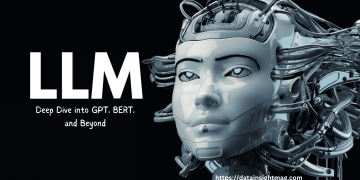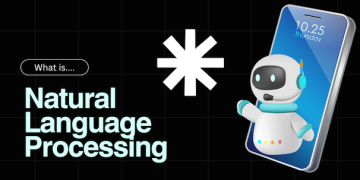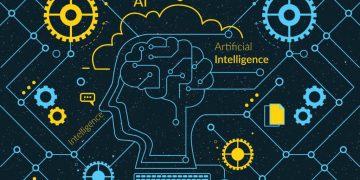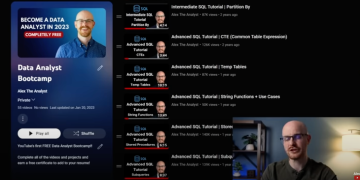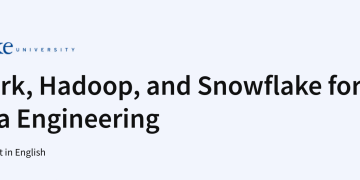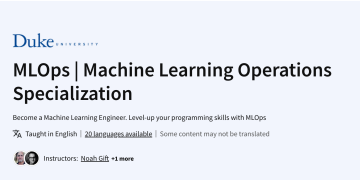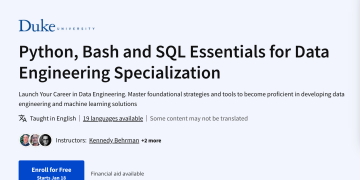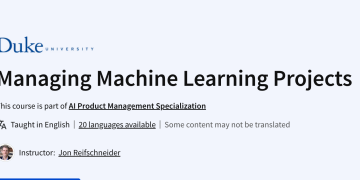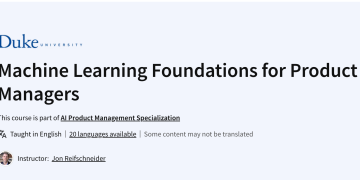Companies around the world have always collected and analyzed consumer data to deliver better service and boost their bottom line. In today’s digital world, we are able to collect large quantities of data that require non-traditional data processing methods and applications.

Data science is a field of research involving the extraction of knowledge from all the data collected. There is a strong demand for specialists who can turn data analysis into a strategic advantage for their organizations. In your career as a data scientist, you can develop data-driven business solutions and analytics.
The Work of Data Science
Did you know that Netflix is a video service provider that uses data science extensively? The organization shall take action on user interaction and retention, including:
- When you pause, rewind or fast-forward
- What day of the week and what time of day you watch content
- When and why you leave content
- Where in the world you’re watching from
- Your browsing and scrolling behaviour
- What device you watch on
Netflix has more than 170 million users worldwide! Netflix uses sophisticated data science metrics to process all this information. This makes it possible to present a better film and to make suggestions to its users and even create better shows for them. The Netflix hit series House of Cards has been created using data science and big data. Netflix gathered user data from the West Wing film, another drama taking place in the White House. The organization took into account where people stopped as they fast-tracked and when they stopped watching the program. Analyzing this data helped Netflix to build what it believed was a totally engrossing show.
Now let’s review some of the essential data science skills that a person should have.
7 Skills To Become A Data Scientist
In order to become a data scientist, you would need to learn skills in the following areas:
Skill 1: Obtain the knowledge of the database needed to store and analyze data using software such as Oracle® Database, MySQL®, Microsoft® SQL Server, NoSQL, and Teradata®.
Skill 2: Learn statistics, probability, and mathematical analysis.
Statistics is a science concerned with the creation and analysis of methods for gathering, analyzing, interpreting, and presenting empirical evidence.
Probability is a calculation of the probability of an occurrence happening.
Mathematical analysis is a branch of mathematics concerned with limits and related theories, such as differentiation, integration, measure, infinite series, and analytic functions.

Skill 3: Learn at least one programming language. Programming tools such as R, Python, and SAS are very relevant when conducting data analytics.
R is a free software environment for statistical computing and graphics, which supports most Machine Learning algorithms for Data Analytics such as regression, association, and clustering.
Python is an open-source general-purpose programming language. Python libraries like NumPy and SciPy are used in Data Science.
SAS can mine, alter, manage and retrieve data from a variety of sources as well as perform statistical analysis on the data.
Skill 4: Master Data Wrangling, which includes cleaning, manipulating, and organizing data. Common data wrangling methods include R, Python, Flume, and Scoop.
Skill 5: Master the principle of Machine Learning. Provide systems with the ability to learn and evolve naturally from experience without being specifically programmed to do so. Machine Learning can be accomplished using various algorithms such as Regressions, Naive Bayes, SVM, K Means Clustering, KNN, and Decision Tree algorithms to name a few.
Skill 6: to have a working knowledge of Big Data resources such as Apache Spark, Hadoop, Talend, and Tableau, which are used to manage massive and complex data that cannot be processed using conventional data processing software.
Skill 7: Improve the capability to visualize the outcome. Data visualization that incorporates various data sets and produces a visual display of outcomes using diagrams, charts, and graphs.
Careers in Data Science
Once you’ve mastered these skills, you’ll have a range of career opportunities available.
Data Scientist
Data scientists develop data-driven business strategies and analytics by driving optimization and optimizing product growth. Predictive modeling is used to improve and optimize customer service, revenue generation, advertisement targeting, and more. Data scientists are now collaborating with various functional teams to incorporate models and track outcomes.
Data Engineer
Data engineers are putting together massive, complex data sets. They define, design, and execute internal process changes and then construct the infrastructure needed for efficient data extraction, transformation, and loading. They also develop analytical tools that use the data pipeline.
Data Architect
Data architects evaluate the structural requirements of new technologies and applications and build database solutions. Install and configure information systems and transfer data from legacy systems to modern ones.
Data Analysts
Data analysts collect data from primary or secondary sources and maintain databases. They interpret this data, analyze findings using statistical methods, and build data collection systems and other solutions that help management prioritize business and information needs.
Business Analysts
Business analysts assist the corporation in preparing and tracking the development and organization of specifications. They validate resource requirements and develop cost estimating models by generating informative, actionable, and repeatable reporting.
Data Administrator
Data administrators aid with the creation and updating of existing databases. They are responsible for setting up and testing new database and data handling systems, maintaining the security and integrity of databases, and developing complex query definitions that allow data to be retrieved.
Summary
Mastering the field of data science starts with understanding and working with the key technology tools used to analyze big data. You need to learn the development and programming frameworks used by Hadoop and Spark to process large quantities of data in a distributed computing environment and gain expertise in and implement complex data science algorithms using R, the preferred language for statistical processing. The insights you glean from the data are delivered as consumable reports using data visualization tools such as Tableau.
When you have mastered data management and predictive computational techniques, you then move to state-of-the-art machine learning technologies. This expansive data science learning pathway will help you succeed through a wide variety of big data and data science technologies and techniques.


